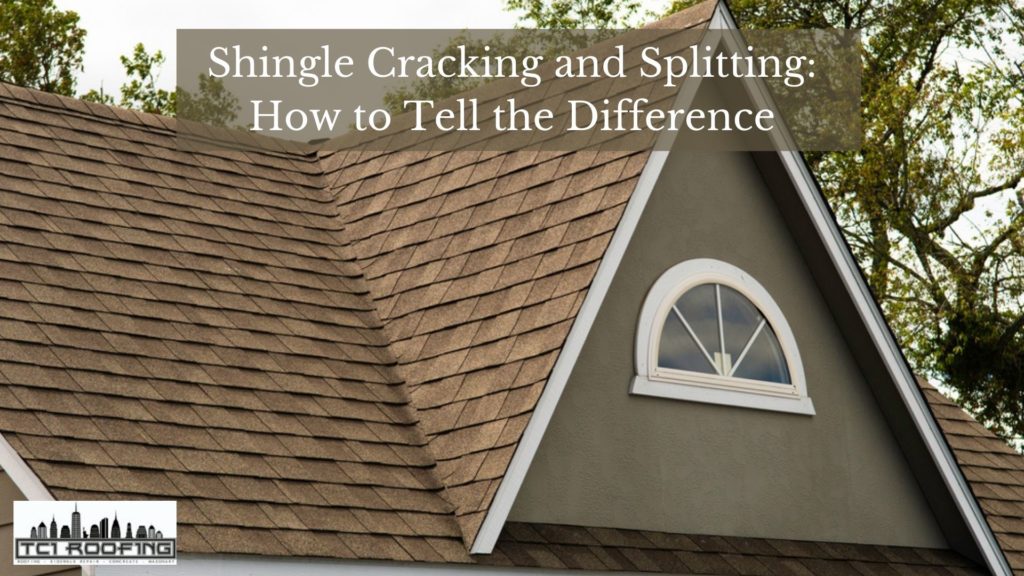Shingles are a common roofing material that can last for decades. However, shingle problems do occur, and some shingles will crack or split due to changes in temperature, water damage, age, etc. It is essential to know the difference between these two shingle problems so you can take the appropriate action for your home’s shingles. This guide will help you distinguish between shingle cracking and splitting, so you no longer have to worry about this problem!
Splitting Vs. Cracking
Splitting and cracking are distinguished because splitting divides an entire shingle into pieces, whereas cracking does not; it occurs on the shingle surface. Modern asphalt shingles, comprised of fiberglass, are usually more flexible and more prone to cracking. Splitting can occur if the tiles are bent beyond their flexing capability, such as during harsh weather conditions such as large storms. TCI Manhattan Roofing is a reputable roofing company that specializes in both residential and commercial roofing. You can reach out to us at ManhattanRoofingnyc.com to learn more about our services.
CRACKING
Moisture or roof aging are the most common causes of cracks. Organic or fiberglass shingles are more likely to crack due to roof aging, although excessive fillers in the asphalt mix can also cause this problem. If your roof is new, the fractures could indicate a faulty mat or inferior shingles.
Other times, moisture or evaporation causes the shingles to lose volatiles. The asphalt shingles become dry, shrink, and break as a result of this. The major objective of this volatiles, which are chemicals added to the asphalt mix, is to make the shingles more flexible and waterproof. Your roof would be less flexible and more prone to cracking if the volatiles in your asphalt shingles were not sufficient.
SPLITTING
Temperature variations are the most common cause of roof shingle splitting, occurring in a diagonal pattern or randomly throughout the roof. When the weather gets hot, the shingles expand, and the joints between them shrink. When it’s chilly outside, the joints develop.
The roof shingles that link the underlying seams shrink, putting stress on the bridging shingles. As a result of these conditions, the adhesive strips lose their effectiveness, causing the damaged shingle to separate. Once your asphalt shingles have split, your roof is vulnerable to leaks and wind damage.
Common Causes
Splitting and cracking of asphalt shingle roofing, whether regular 3 tab shingles or designer shingles, is more than simply a cosmetic issue. If not corrected by a roofing contractor, split components can cause gaps that allow rainfall to penetrate the shingles, resulting in leaks. Some of the most prevalent reasons for crack shingles and thermal splitting are listed below.
High speed winds
A conventional asphalt shingle roof is made to withstand wind. Reinforcing adhesives at the shingle edges, for example, can assist avoid splitting, cracking, and water intrusion. However, wind can sometimes be so strong that it lifts the shingles by the edges, resulting in wrinkles about an inch below the shingle edges—a common sign of cracking shingles.
Thermal expansion
Temperature fluctuations cause all kinds of materials to expand and compress. This is why asphalt shingle installers are taught to space each piece of shingles apart. The shingles would impose pressure on each other if they were placed too close together, cracking or, in extreme circumstances, splitting.
FAQS
Why are my Shingles Cracking?
When shingles crack, it is usually due to the shingle aging or other weather conditions. However, in many cases shingles have not been properly installed and are thus more likely to crack due to this deficiency.
What is a Shingle Split?
A shingle split is when a shingle separates into two or more pieces. This can be caused by heavy winds, shingles aging over time and becoming brittle, or shingles not being properly installed.

